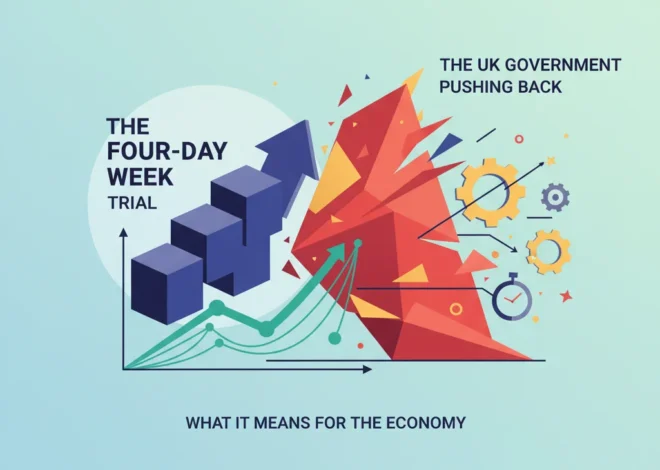
Pentagon Puts Defence Giants on Notice: A New Era for Investing in National Security?
The Warning Shot Heard Across the Defence Industry
In a move that sent ripples through the boardrooms of America’s largest defence contractors, the Pentagon has fired a clear warning shot: the era of cozy, no-bid contracts is facing a reckoning. Deputy Defense Secretary Kathleen Hicks recently announced a series of measures aimed at dismantling the status quo and injecting a potent dose of competition into the multi-trillion-dollar world of military procurement. This isn’t just a bureaucratic reshuffle; it’s a fundamental strategic shift with profound implications for the stock market, national security, and the future of investing in the defence sector.
For decades, a handful of colossal firms—often called the “Big Five”—have dominated the landscape, securing the lion’s share of contracts from the Department of Defense (DoD). However, facing new geopolitical threats and the blistering pace of technological change, the Pentagon is signaling that business as usual is no longer acceptable. “We are not getting the results we need, or the speed we need, from our traditional acquisition system,” Hicks stated in a speech outlining the new strategy (source). The message is clear: innovate and compete, or risk being left behind.
This policy pivot is driven by a critical need to counter near-peer adversaries like China and Russia, who are rapidly advancing in areas like artificial intelligence, hypersonics, and cyber warfare. The old model of ten-year development cycles for a new fighter jet is dangerously slow in an age where software and algorithms can redefine the battlefield overnight. For investors, business leaders, and anyone interested in the intersection of finance and global security, this moment represents both a significant risk and a compelling opportunity.
The Iron Fortress: Understanding the “Big Five” and Decades of Consolidation
To grasp the magnitude of this change, one must understand the current structure of the U.S. defence industry. It is, by design, an oligopoly. This reality was largely shaped by a pivotal 1993 dinner, famously dubbed the “Last Supper,” where then-Secretary of Defense Les Aspin told the leaders of the nation’s top defence firms that the Pentagon could no longer afford to support them all in the post-Cold War era. The explicit message was to consolidate or perish.
The industry complied. A wave of mergers and acquisitions followed, shrinking the pool of prime contractors from over 50 to just five dominant players: Lockheed Martin, RTX (formerly Raytheon), Boeing, Northrop Grumman, and General Dynamics. This consolidation created titans of industry with unparalleled expertise and production capacity, but it also stifled competition. According to a 2022 congressional hearing, the number of aerospace and defence prime contractors has shrunk by over 80% in the last three decades, leading to a situation where many critical defence systems have only one or two potential suppliers.
The following table provides a snapshot of these industrial giants, illustrating their immense scale and influence on the global economy.
| Company | Approx. 2023 Revenue | Key Business Areas | Notable Products |
|---|---|---|---|
| Lockheed Martin (LMT) | $67.6 Billion | Aeronautics, Missiles, Space | F-35 Lightning II, Black Hawk Helicopter, Javelin Missile |
| RTX Corporation (RTX) | $68.9 Billion | Aerospace, Missiles, Defence Systems | Patriot Missile System, Pratt & Whitney Engines, Tomahawk Cruise Missile |
| Boeing (BA) – Defense & Space | $24.9 Billion (Defense Segment) | Military Aircraft, Satellites, Autonomous Systems | F/A-18 Super Hornet, KC-46 Tanker, Apache Helicopter |
| Northrop Grumman (NOC) | $39.3 Billion | Aerospace, Defense Systems, Space | B-21 Raider Stealth Bomber, James Webb Space Telescope, Global Hawk Drone |
| General Dynamics (GD) | $42.3 Billion | Aerospace, Marine Systems, Combat Systems | Abrams Tank, Virginia-class Submarines, Gulfstream Jets |
Note: Revenue figures are approximate based on full-year 2023 financial reports.
This concentration of power has created what President Eisenhower famously warned of: a “military-industrial complex” with immense inertia. The Pentagon’s new initiative is a direct attempt to challenge that inertia. Beyond the Bus Stop: Analyzing the Economic Fallout of the UK's Youth Transport Decision
However, what feels different this time is the external pressure. The war in Ukraine has been a brutal lesson in the need for mass production of affordable, effective systems, while the tech race with China is a genuine existential challenge. My prediction? We won’t see the “Big Five” dismantled. Instead, we’ll see a forced evolution. They will be pushed to act more like tech integrators, partnering with or acquiring innovative startups. For investors, the real alpha might not be in the primes themselves, but in the smaller, disruptive companies they will be forced to engage with. Furthermore, there’s a huge, untapped opportunity for financial technology. Imagine using blockchain for secure and transparent supply chain management or advanced fintech platforms to expedite payments to smaller vendors, cutting through the red tape that often suffocates them. This could be the true revolution.
The New Playbook: Fostering Competition and Speed
The DoD’s strategy to boost competition isn’t a single action but a multi-pronged approach designed to lower barriers to entry and reward innovation. The goal is to create an ecosystem where a startup with a groundbreaking AI algorithm can compete for a piece of a contract, rather than being locked out of a monolithic, decade-long program.
Key pillars of this new approach include:
- Unbundling Contracts: Breaking up massive “winner-take-all” programs into smaller, more manageable pieces that smaller companies can bid on.
- Intellectual Property Rights: Demanding greater government ownership of data and intellectual property, preventing contractors from “locking in” the government to their proprietary systems for maintenance and upgrades.
- Incentivizing Performance: Shifting from cost-plus contracts, which reward spending, to fixed-price or incentive-based contracts that reward speed, efficiency, and delivering on-time and on-budget.
- Streamlining Entry: Creating new pathways and simplifying the notoriously complex bureaucracy for non-traditional companies to work with the Pentagon. A DoD press release highlights the focus on building a “more resilient and dynamic” industrial base.
This represents a significant departure from the traditional procurement model, as illustrated below.
| Procurement Aspect | Traditional Model (The Old Way) | Reformed Model (The New Goal) |
|---|---|---|
| Primary Contractor | Single prime contractor for entire system lifecycle. | Multiple vendors competing for different system components. |
| Contract Type | Often cost-plus, long-term, and exclusive. | Incentive-based, shorter-term, and modular. |
| Technology Approach | Proprietary, closed architecture. Government “locked-in.” | Open architecture, interoperable systems. |
| Pace of Innovation | Slow, bureaucratic, and risk-averse. | Rapid, iterative, and accepting of commercial tech. |
| Barriers to Entry | Extremely high, favoring incumbents. | Lowered to attract startups and non-traditional firms. |
The success of this new playbook will determine America’s ability to maintain its technological edge for decades to come. Beyond the Basics: Four Pillars of Financial Mastery in the Modern Economy
An Investor’s Guide to the Defence Shake-Up
For those involved in finance and investing, this policy shift creates a new set of variables to consider when evaluating the defence sector. The knee-jerk reaction might be to view this as bearish for the “Big Five,” but the reality is more nuanced.
For the Incumbents (LMT, RTX, BA, NOC, GD):
These giants are not going anywhere. Their deep integration with the DoD, massive production capacity, and political influence provide a formidable moat. However, investors should watch for potential margin compression as competition increases. The key metric to monitor will be their ability to adapt. Companies that successfully pivot to become integrators of new technology and form agile partnerships will thrive. Those that rely on old business models may see their stock market multiples shrink over time.
For the Challengers (The New Guard):
The real growth opportunity lies with the smaller, more innovative companies that can now get a foot in the door. This includes publicly traded firms and venture-backed startups in areas like:
- Artificial Intelligence & Autonomous Systems: Companies like Palantir (PLTR) and Shield AI.
- Space & Satellites: Firms building smaller, more resilient satellite constellations.
- Cybersecurity: The digital battlefield is paramount, creating constant demand for advanced security solutions.
- Advanced Manufacturing: Companies utilizing 3D printing and new materials to accelerate prototyping and production.
This shift could trigger a new wave of M&A activity, as the primes look to acquire innovative capabilities rather than develop them in-house. For those with a higher risk tolerance, venture capital and private equity funds focused on defence tech offer another avenue for exposure. The world of defence trading and investment is becoming more complex and dynamic than ever before. The Mandate's Shadow: How a Century-Old British Policy Shapes Today's Middle East Markets
Conclusion: A New Battlefield for Capital and Innovation
The Pentagon’s warning to its largest contractors is more than just a headline; it’s a strategic imperative born from a changing world. The effort to inject competition into the defence industrial base is an acknowledgment that the future of warfare will be won not just with steel and explosives, but with silicon, software, and speed. While the path to reform is fraught with challenges, the direction is set.
For the financial community, this opens a new chapter. It demands a re-evaluation of long-held assumptions about the stability and structure of the defence market. The winners of the next decade will be those who can navigate this shifting landscape, identifying the innovators and adaptors who will build the arsenal of the future. The intersection of national security, economics, and financial technology has never been more critical, and the stakes—for both portfolios and global stability—could not be higher.


